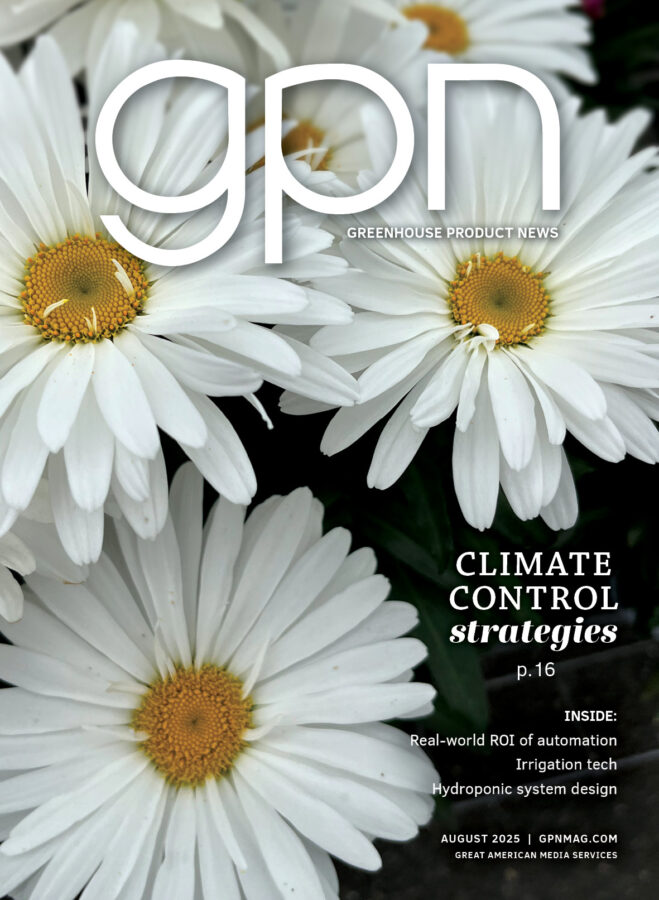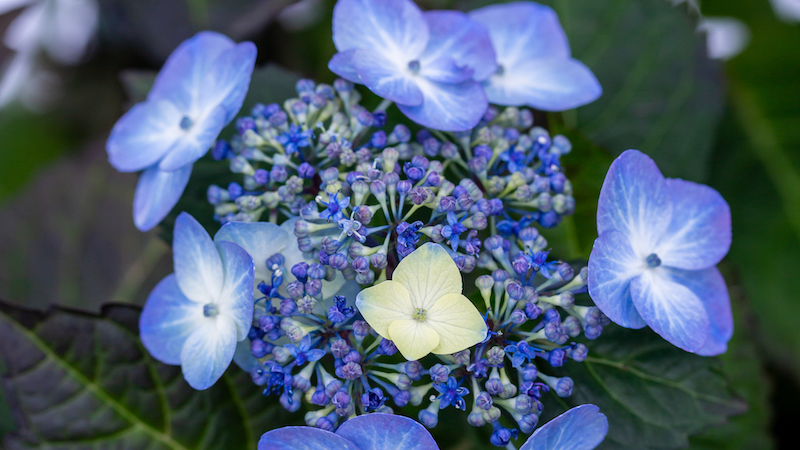
Culture Report: Endless Summer ‘Pop Star’ Hydrangea
When it comes to adding new varieties to the Endless Summer lineup, the bar has been set very high. At the very basic level, an Endless Summer hydrangea must be cold hardy to Zone 4, have
very high production values to service a wide range of environments globally and, most importantly, exhibit strong reblooming power.
A TRUE BREEDING BREAKTHROUGH
One area within Hydrangea macrophylla that has kept our breeders hard at work is the compact lacecap category. In an effort to bring something truly unique and groundbreaking to the market, Bailey’s breeding team had these objectives in mind: stiffer stems, shorter internodes, improved foliage, better bloom load and improved rebloom.
A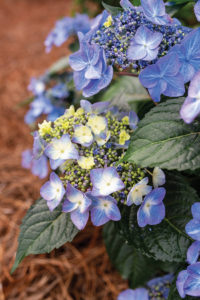 fter years of evaluating potential plants, Head Breeder David Roberts and his team at Bailey Innovations, the breeding arm of Bailey Nurseries, finally landed on a compact lacecap Hydrangea macrophylla that met their desired criteria. Endless Summer ‘Pop Star’ is the newest addition to the series available at retail in Spring 2023, and it boasts a compact size with extremely heavy flowering.
fter years of evaluating potential plants, Head Breeder David Roberts and his team at Bailey Innovations, the breeding arm of Bailey Nurseries, finally landed on a compact lacecap Hydrangea macrophylla that met their desired criteria. Endless Summer ‘Pop Star’ is the newest addition to the series available at retail in Spring 2023, and it boasts a compact size with extremely heavy flowering.
‘Pop Star’ is “arguably the best rebloomer we have in the brand,” says Roberts. “In our production trials, ‘Pop Star’ leads the pack when it comes to the quickness to rebloom and the quantity of blooms it produces.”
Aside from its impressive rebloom, ‘Pop Star’ is incredibly cold hardy.
Bailey trials all its plants in Minnesota, and data has shown that ‘Pop Star’ will take temperatures as low as -35° F. Even if it dies back due to cold
or fluctuating temperatures, ‘Pop Star’ will regrow from the crown that following spring and that vegetative growth will still produce flowers.
Liner options will be available to growers in spring of 2023, and Bailey Nurseries is confident this new introduction will pop at retail once it enters garden centers.
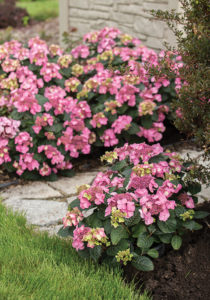 The four key characteristics that make Endless Summer ‘Pop Star’ truly special are:
The four key characteristics that make Endless Summer ‘Pop Star’ truly special are:
- Prolific rebloomer. In rebloom trials, new buds have appeared as early as four weeks — dependent on climate — after a hard cutback to remove terminal buds.
- Genetically compact. ‘Pop Star’ maintains its small stature with short internodes.
- Easy to grow. It requires little to no PGRs, meaning fewer touch points lead to a more profitable, retail-ready plant.
- Versatile. Adaptable to any setting, ‘Pop Star’ is stunning in the landscape as an individual or mass planting, and it will also shine in decorative containers.
For growers already producing Endless Summer hydrangeas, ‘Pop Star’ will be a no-brainer and you will find easy success. Following the culture guidelines outlined below will help growers produce a top-quality crop.
MEDIA & FERTILIZER
Media pH will vary depending on region. We recommend a media pH range of 5.5 to 6.5. Maintain an EC level of 1.5 to 2.5.
Fertilization recommendations also vary by location. In the Midwest, we incorporate Polyon 17-3-10 at 10 pounds per yard and uncoated aluminum sulfate at 13.75 pounds per yard. We top dress in August with coated aluminum sulfate at 15 grams per gallon.
In the Pacific Northwest, we incorporate eight-month Polyon 18-6-11 at planting. Coated aluminum sulfate is added at 10 pounds per yard.
In the South, apply composted pine bark with 9 pounds (15-6-11) controlled-release fertilizer. Supplement with weekly application of liquid feed (12-3-6) from mid-summer to fall.
LIGHT
In most of the country, grow ‘Pop Star’ in a full sun environment. In the South or in other warm parts of the country, we recommend plants be kept under 47% shade starting on April 1.
WATER REQUIREMENTS
‘Pop Star’ generally requires medium to high water requirements and can be grown under a variety of watering regimes with no root problems.
For Midwest producers, however, ‘Pop Star’ prefers to run on the drier side during vegetative development to limit growth; overwatering will keep the plant vegetative. When flowers are present, do not dry stress or flowers will burn. Use acidified water if needed.
PEST & DISEASE MANAGEMENT
The Endless Summer lineup is nearly maintenance free. Anthracnose, powdery mildew, aphids, and two-spotted spider mites have been observed. Spray as needed with common fungicides, insecticides and miticides. Hydrangea macrophylla is very sensitive to pre-emergent herbicides and the miticide Spiromesifen.
OVERWINTERING PRACTICES
Overwintering varies greatly depending on region. In colder climates like in Minnesota, plants are overwintered in two ways: in a covered structure or outside using a double poly method. With the covered structure, a cold frame or greenhouse is covered in a dual-side black and white poly and heated to keep temperature at a minimum of 28° F. When overwintered outside, plants are consolidated, tipped and covered with alternating layers of 3 to 4 mil poly and 3-inch sudan grass. With this method, temperatures remain constant from 28 to 32° F.
In Illinois, plants are covered with two layers of frost blanket where low temperatures stay between 22 and 25° F. In January and February, poly houses are vented during warmer weather to keep plants dormant. In early March, houses are uncovered to keep plants from getting too active and naturally wake up with outdoor temperatures. Plants will get re-covered with frost cloth as needed to protect from freezing temperatures after poly houses are uncovered.
In the Pacific Northwest, plants are overwintered outdoors, spaced in growing lines. Poly houses can be used into late winter when forcing for early spring sales. Temperatures are kept above 20° F.
In the South, plants are consolidated using frost blankets if temperatures reach 22 to 23° F. Remove when temperatures reach 50° F or when watering is needed. It is also recommended that plants go fully dormant to avoid winter injury.
FINISH TIMES
Growers have many options for growing Endless Summer ‘Pop Star’ that can easily adapt to their production schedules. Bailey’s JumpStart liners
will finish in about 12 weeks in a #2 container and 16 weeks in a #3 container. Finishing times will vary depending on region.
Keep in mind these are general production guidelines we have found to work best at Bailey’s regional operations and will vary depending on your environmental circumstances.









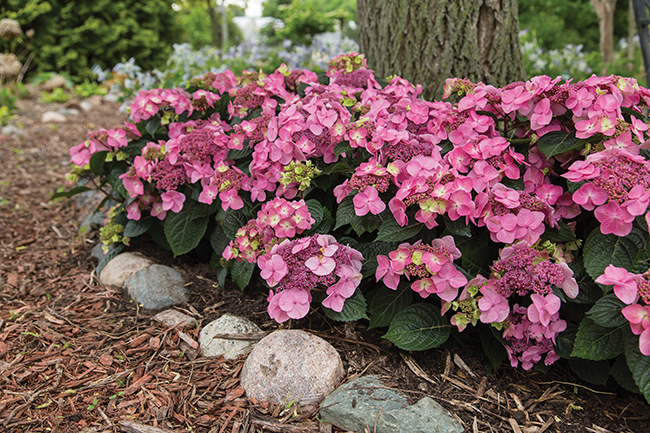
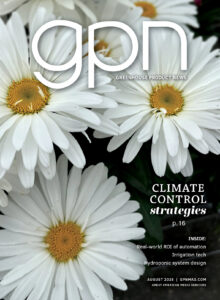
 Video Library
Video Library 

















